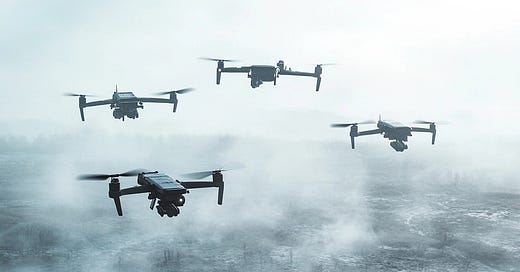In the past month, the Russia Ukraine war, now well into its fourth year, has entered a pivotal phase marked by simultaneous escalation on the battlefield and renewed diplomatic overtures.
A surprise long-range drone strike deep into Russian territory has underscored Ukraine’s evolving military capabilities and raised the stakes for both sides.
At the same time, high-profile negotiations involving US President Donald Trump as a would-be mediator alongside Ukraine’s Volodymyr Zelensky and Russia’s Vladimir Putin signal a complex geopolitical gamble to halt the bloodshed of war.
A Bold Drone Strike: Tactical and Strategic Implications
Late May 2025 saw one of Ukraine’s most audacious military operations of the war: a coordinated drone strike targeting multiple Russian airbases across five time zones. Codenamed Operation Spider’s Web, this surprise attack launched 117 long-range drones at Russian military airfields as far as Siberia and the High North.
By Ukrainian accounts and satellite imagery, the strikes inflicted substantial damage, reportedly destroying or damaging dozens of Russian aircraft including strategic long-range bombers and causing billions of dollars in losses.
The raid marked the deepest Ukrainian incursion into Russian territory since the conflict began, hitting assets previously thought secure far behind the frontlines.
Tactical impact: The immediate tactical effect was a serious blow to Russia’s air power. Among the targets were nuclear-capable Tu-95 and Tu-160 bombers that Moscow has used to launch cruise missile barrages at Ukraine.
By knocking a significant number of these bombers out of action, Ukraine potentially degraded Russia’s ability to strike Ukrainian cities and infrastructure. It also forced the Russian military to reckon with vulnerabilities in its rear defenses, diverting resources to protect bases deep inside Russia.
The operation demonstrated Ukraine’s growing prowess in unmanned systems and long-range strike capability. After earlier smaller-scale drone attacks on Crimea and even the Moscow area in 2023 and 2024, this campaign was a qualitative leap, showing Kyiv can coordinate massive drone swarms over vast distances.
Tactically, it showcased ingenuity: reports indicated some drones were smuggled inside Russian territory hidden in wooden crates to reduce warning time, highlighting Ukraine’s capacity for unconventional warfare.
Striking the heart of Russia’s strategic bomber fleet was psychologically jarring for Moscow’s leadership and populace. It shattered the assumption of sanctuary; even regions thousands of miles from Ukraine are now part of the battlefield. This could undermine Russian domestic confidence and force the Kremlin to rethink its escalation calculus.
From Ukraine’s perspective, it was a message that war can be brought home to Russia’s military assets if the Kremlin continues its own missile and drone onslaught against Ukraine. In President Zelensky’s words, such bold operations reinforce that Ukraine is not going to surrender and not going to give in to ultimatums, instead it will up the cost on the invader.
Conversely…
Keep reading with a 7-day free trial
Subscribe to Pantheon Insights to keep reading this post and get 7 days of free access to the full post archives.



